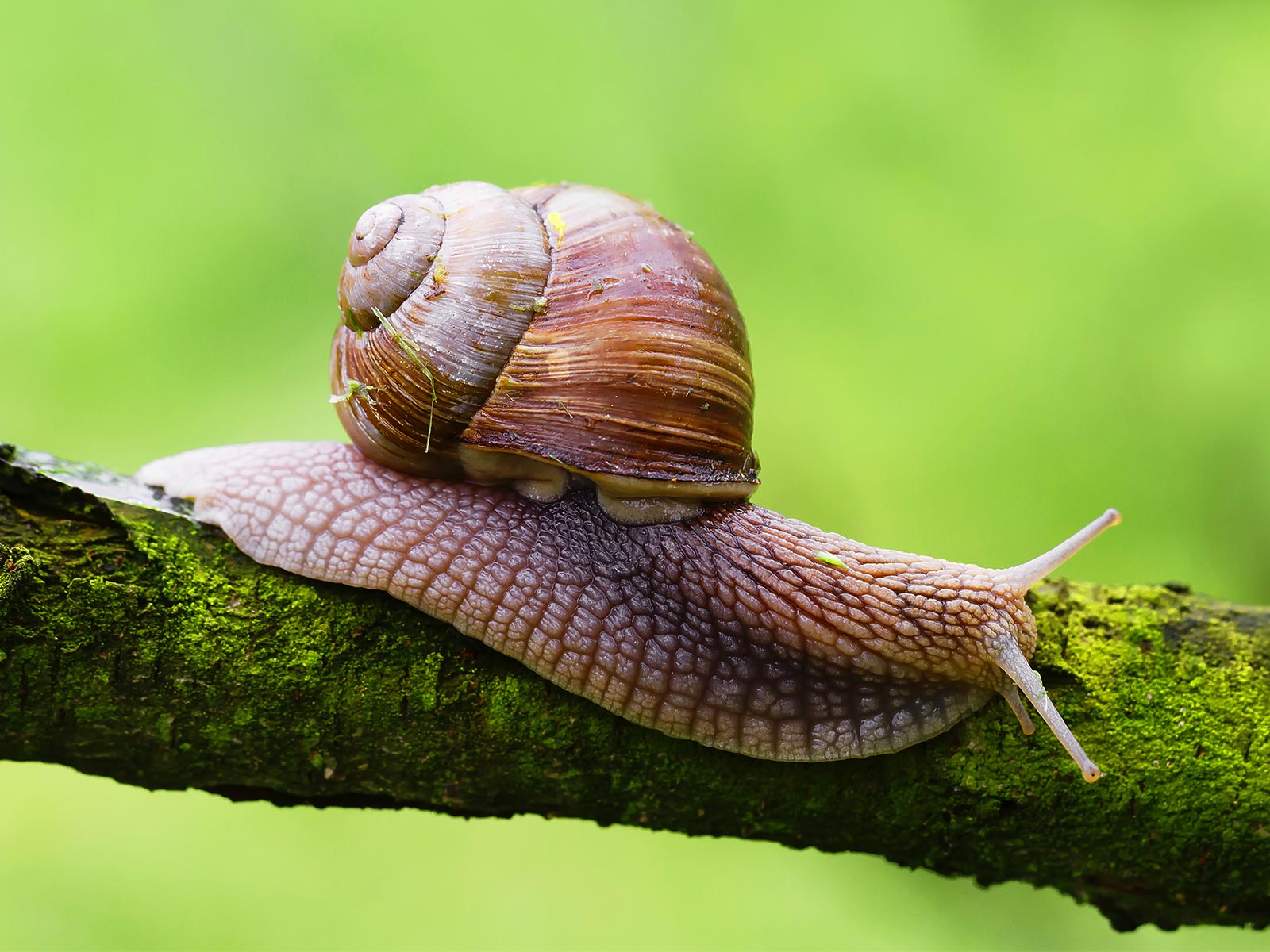Have you ever seen a slug or a snail? They’re both slimy creatures that live on land. Slugs don’t have shells, but snails do. Snails use their shells to protect themselves from predators, they can retract into if they feel threatened.

Slugs and snails are both gastropods, which means they’re soft-bodied mollusks with a single foot that they use to move around. They’re also related to octopi, squid, and clams! They also have two pairs of tentacles, which they use to smell and taste.
Slugs and snails live all over the world, in a variety of habitats. Some slugs live in trees, while others live in the ground. Snails can live on land or in water, you can find them in freshwater and in the ocean.
Slugs and snails are herbivores, which means they eat plants. They use their raspy tongues to scrape the leaves of plants. Slugs and snails are also important decomposers, which means they help to break down dead plants and animals.
Slugs and snails play an important role in the environment. They help to break down dead plants and animals, which makes the soil healthier. They’re also a food source for other animals, such as birds and snakes.
Fun facts about slugs and snails:
- Slugs and snails can grow to be very large. The largest slug in the world is the banana slug, which can grow up to 10 inches long!
- The largest snail in the world is the African giant snail, which can grow up to 8 inches long.
- Slugs and snails are hermaphrodites, which means they have both male and female reproductive organs. This means that they can all lay eggs. In fact, they can lay hundreds of eggs at a time! The eggs are usually laid in moist soil or under leaves.
- Slugs and snails have a very long lifespan. Some species can live for up to 30 years!
- Slugs and snails are important food sources for many animals, including birds, snakes, and frogs.
- Slugs and snails can produce a slimy substance that helps them to move around and protect themselves from predators.
If you want to observe slugs and snails, the best time to do it is at night or on a cloudy day. Slugs and snails are nocturnal animals, which means they’re most active at night.
To find slugs and snails, look in moist, dark places. You might find them under rocks or logs, or in the garden. If you find a slug or snail, leave it alone and simply observe it. These creatures are harmless and play an important role in nature! Use a flashlight to see it better. You can also take pictures of the slug or snail!
Slugs and snails are fascinating creatures! They’re important members of the ecosystem, and they can be a lot of fun to observe. So next time you’re out in nature, keep an eye out for these slimy creatures!

